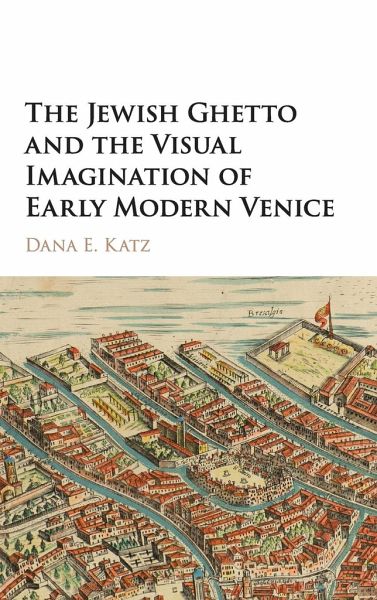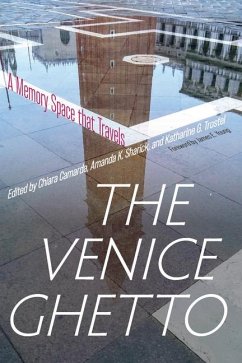
The Jewish Ghetto and the Visual Imagination of Early Modern Venice
Versandkostenfrei!
Versandfertig in 1-2 Wochen
110,99 €
inkl. MwSt.
Weitere Ausgaben:

PAYBACK Punkte
55 °P sammeln!
"The Jewish Ghetto and the Visual Imagination of Early Modern Venice is not a diachronic study of the ghetto's architectural development or microhistory of the masons who erected its tenements. Instead, this is a book about how the built landscape makes,in the words of W. J. T. Mitchell, "seeing show itself." I focus on everyday architectural elements in order to call attention to the vernacular vision of early modern Venice. I am interested in the exchange of gazes framed by ghetto architecture that expose how visuality shapes sociality. That is, I am interested in ways of seeing windows, wal...
"The Jewish Ghetto and the Visual Imagination of Early Modern Venice is not a diachronic study of the ghetto's architectural development or microhistory of the masons who erected its tenements. Instead, this is a book about how the built landscape makes,in the words of W. J. T. Mitchell, "seeing show itself." I focus on everyday architectural elements in order to call attention to the vernacular vision of early modern Venice. I am interested in the exchange of gazes framed by ghetto architecture that expose how visuality shapes sociality. That is, I am interested in ways of seeing windows, walls, and gates that look through them to see how they actively inform society. Through a dissection of the ghetto's architectural anatomy, I parse its constituent elements to interrogate seeing as a mediator of urban experience. I analyze the details of construction and design to deconstruct how the ghetto's fenestration patterns, building heights, and enclosure walls stimulate the senses of space and engage lines of sight"--













